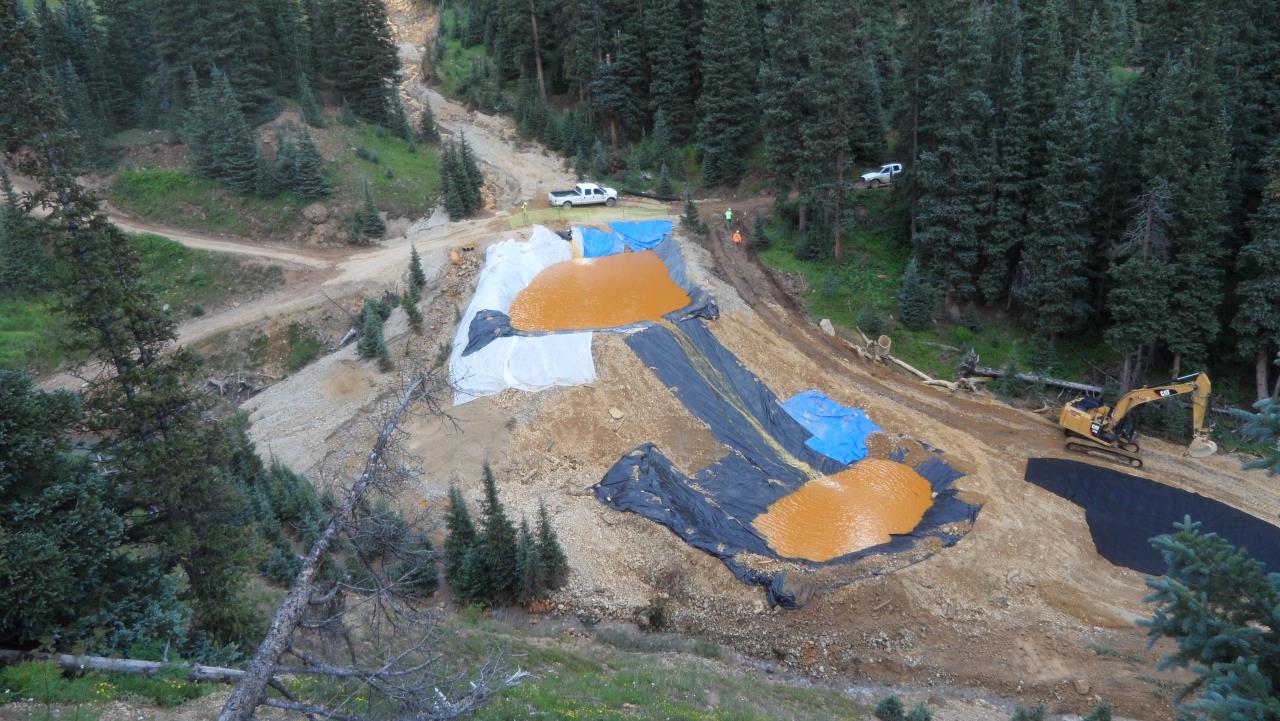EPA adds Colorado gold mine to new Superfund pollution sites
The US Environmental Protection Agency (EPA) has placed the inactive Gold King Mine, source of a major waste spill in Colorado last year, among nearly a dozen sites added to its newly created Superfund National Priorities List.
The move, announced late Wednesday, paves the way for a multimillion-dollar clean-up of the area known as the Bonita Peak Mining District, provided US legislators approve the addition to the listing and therefore the funding.
EPA also included 47 other nearby sites as well as nine other sites in eight states and Puerto Rico, which could all get backing from the Superfund, established by Congress in 1980 to reduce threats to human health and ecological systems from massive and toxic sites.


EPA diverted the release into two settling ponds where the waste was treated with chemicals to lower its acidity. (Image from archives)
The agency proposed putting the Bonita district on the priorities list in April, opening a period for public comment.
The district consists of 35 dormant mines, seven tunnels, four heaps of tailings and two study areas - sites located along Mineral Creek, Cement Creek and the Upper Animas. These waterways flow into the main stem of the Animas River just below Silverton.
Beyond the clean-up itself, environmental lawyer Thaddeus Lightfoot argues, the designation has an even more important significance - it clears a path for an investigation into the extent of damage caused by the spill.


An investigation by The Interior Department concluded the mine plug "might have failed on its own," but smarter intervention could have averted that. (Image by @kelly.greenwell | Instagram)
"In doing so, it also would end a long debate in the area over whether the federal government should orchestrate a clean-up," Lightfoot said in an e-mailed statement. However, it doesn't resolve pending litigation by the state of New Mexico and the Navajo Nation, which alleges that EPA negligence "caused extensive damage to the Animas and San Juan Rivers," he said.
Last year's massive spill was accidentally triggered when EPA teams called in to inspect seepage at the mine, unleashed a torrent of yellow sludge containing heavy metals including arsenic, mercury and lead, which tainted rivers in Colorado, New Mexico and Utah.
Utilities and farmers temporarily stopped drawing water from the rivers for drinking and irrigation. The EPA said water quality quickly returned to pre-spill levels, but the accident triggered a storm of criticism and at least three lawsuits so far.